The Rubbermaid 7×7 shed is a durable, spacious storage solution designed for easy assembly. With clear instructions and snap-together fasteners, it offers a user-friendly DIY experience, though some users find it challenging due to misaligned parts and unclear steps, often requiring an extra pair of hands for smoother assembly.
1.1 Overview of the Rubbermaid 7×7 Shed
The Rubbermaid 7×7 shed is a popular, durable outdoor storage solution designed for versatility and ease of use. With its 7×7 feet dimensions, it offers ample space for storing tools, equipment, and seasonal items. Constructed from high-quality materials, the shed is weather-resistant and built to last. Its compact size makes it ideal for smaller yards or specific storage needs. The shed features a sleek design and is equipped with functional elements like secure doors and a robust frame. While assembly is generally straightforward, some users report challenges with misaligned parts and unclear instructions, emphasizing the importance of proper preparation and patience.
1.2 Importance of Proper Assembly
Proper assembly of the Rubbermaid 7×7 shed is crucial for ensuring its structural integrity and longevity. Misaligned parts or incorrect hardware usage can lead to instability and potential damage. Clear instructions and careful attention to detail are essential to avoid common pitfalls. While many users find the process manageable, others report challenges with unclear instructions or difficult-to-assemble sections. Ensuring a solid, level base and correctly aligning components are vital for a secure and weather-tight structure. Taking the time to follow each step meticulously guarantees a safe and functional storage solution. Proper assembly also prevents future maintenance issues.

Pre-Assembly Preparation
Before starting, gather all necessary tools and ensure the site is level and clear. Unpack and organize components to streamline the assembly process.
2.1 Tools and Materials Needed
To assemble the Rubbermaid 7×7 shed, you’ll need basic tools like screwdrivers (both flathead and Phillips), wrenches, and a rubber mallet for tapping parts into place. A tape measure and level will help ensure accuracy. Some users recommend having a ladder for reaching higher sections. Additionally, gather materials like weather-resistant fasteners and a waterproof sealant for added durability; The shed typically comes with pre-packaged hardware, but it’s wise to double-check the inventory. Don’t forget safety gear like gloves and protective eyewear. Having all tools and materials ready will streamline the assembly process.
2.2 Site Preparation and Leveling
Before assembling the Rubbermaid 7×7 shed, ensure the site is flat and clear of debris. Use a level to confirm the ground is even, as uneven surfaces can cause instability. If necessary, create a solid base using concrete, patio stones, or a treated-wood platform. Proper leveling ensures the shed stands securely and prevents water from pooling. Double-check the site dimensions to accommodate the 7×7 footprint. A well-prepared site guarantees a smoother assembly process and enhances the shed’s durability and weather resistance over time.
2.3 Unpacking and Organizing Components
Start by carefully unpacking all components of the Rubbermaid 7×7 shed. Lay out each part on a flat surface, cross-referencing them with the instruction manual. Separate hardware like screws, bolts, and fasteners into labeled containers for easy access. Use the provided inventory list to ensure no items are missing or damaged. Organize panels, frames, and accessories in logical groups to streamline assembly. This step minimizes delays and reduces the risk of misplaced parts, ensuring a smoother and more efficient building process. Keep all components within reach to maintain workflow.
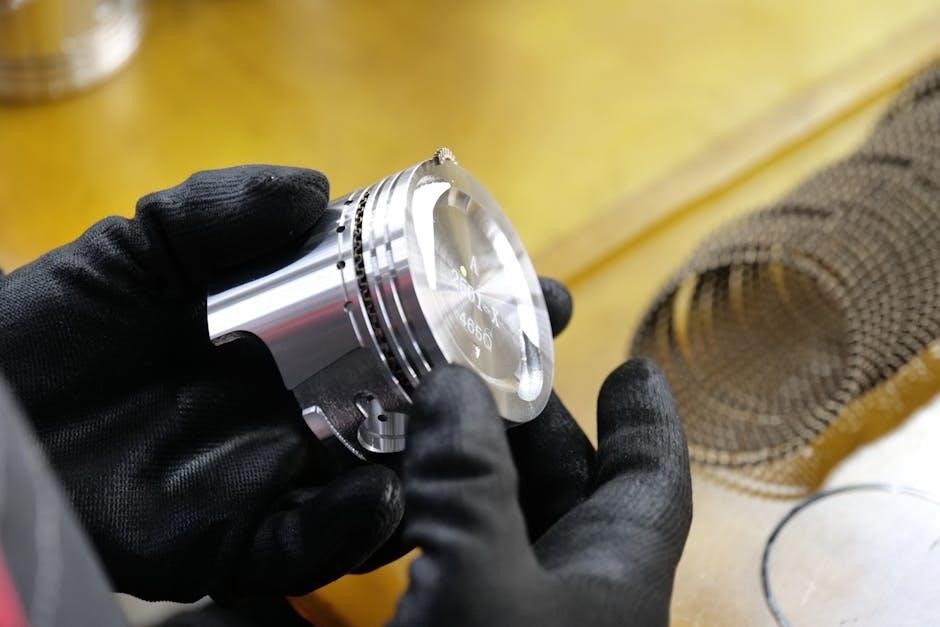
Understanding the Assembly Instructions
Understanding the assembly instructions is key to a successful build. Review the manual thoroughly, ensuring clarity on each step and component. Familiarize yourself with snap-together fasteners and sliding mechanisms to avoid common mistakes.
3.1 Reading the Instruction Manual
Reading the instruction manual is the first step in a successful assembly. Take time to thoroughly review each page, ensuring understanding of all components and steps. Pay attention to diagrams and symbols, as they provide critical guidance. Many users find the instructions clear, but others report challenges with unclear sections. Organize components beforehand to match the manual’s layout. Start with the foundation, as proper leveling is essential. While most find the process manageable, having a second person can help with complex steps. Familiarize yourself with snap-together fasteners and sliding mechanisms to avoid misalignment issues.
3.2 Identifying Key Components and Hardware
Identify and organize all components before starting. The kit includes pre-drilled panels, snap-together fasteners, and hardware like screws and bolts. Label each part according to the manual to ensure easy reference. The floor, walls, roof, and doors are the primary structural elements. Familiarize yourself with sliding fasteners and their role in securing panels. Check for any missing or damaged parts and verify hardware quantities. Proper identification ensures a smooth assembly process and prevents delays. Organizing components by type or step can significantly reduce assembly time and confusion.
3.4 Common Mistakes to Avoid
Common mistakes during assembly include not preparing a level surface, misaligning panels, and forcing parts together. Ensure all components are properly organized and labeled. Avoid skipping steps or ignoring hardware checks, as this can lead to instability. Misaligned parts can cause structural issues, so double-check alignment before securing. Forcing snap-together fasteners may damage them. Always follow the sequence in the manual and avoid over-tightening hardware. Using the wrong tools or missing steps can complicate the process. Pay attention to details to ensure a sturdy and secure structure. Proper alignment and patience are key to a successful assembly.

Step-by-Step Assembly Process
Begin with the floor, ensuring it’s level and secure. Construct walls by snapping panels into place, then attach the roof and supports. Finally, install doors and hardware. Always follow the manual for precise guidance and use a second person for challenging steps to ensure proper alignment and stability.
4.1 Assembling the Floor and Base
Start by placing the floor panel on a level surface, ensuring it is aligned and secure. Use the provided hardware to attach the base frame to the floor, following the manual’s step-by-step instructions. Snap-together fasteners simplify this process, but proper alignment is crucial. Double-check that all corners are square and edges are flush. If alone, consider a second pair of hands to prevent misalignment. Once the base is assembled, ensure it is sturdy and even, as this foundation is critical for the entire shed’s stability and proper functioning of the walls and roof.
4.2 Constructing the Walls and Panels
Begin by attaching the wall panels to the base, ensuring each panel aligns with the floor’s edge. Use the provided hardware and follow the manual’s instructions to secure them. Snap-together fasteners simplify the process, but verify each connection is snug and properly fitted. Check alignment with a level to ensure walls are straight and square. Once all panels are in place, attach the corner supports for added stability. If panels feel heavy or unwieldy, enlist a second person to assist. Properly fitted walls are essential for supporting the roof and maintaining the shed’s structural integrity.
4.3 Installing the Roof and Roof Supports
Place the roof panels onto the wall frame, ensuring they are centered and aligned properly. Secure them using the provided hardware, following the manual’s guidance. Snap-together fasteners simplify this step, but verify each panel is tightly fitted. Install roof supports to enhance structural integrity, ensuring they fit snugly between the walls. Proper alignment is crucial to maintain water tightness and stability. If panels feel heavy, consider enlisting assistance. Once installed, check that the roof is evenly balanced and securely attached to the walls for optimal durability and weather resistance.
4.4 Attaching the Doors and Hardware
Begin by attaching the door hinges to the shed frame using the provided screws, ensuring proper alignment for smooth operation. Next, secure the door panels to the hinges, tightening firmly for stability. Install the door handle and latch mechanism according to the instructions, making sure they align correctly for secure closure. Test the doors to ensure they open and close smoothly, adjusting hinges if necessary. Finally, verify all hardware is securely fastened to maintain the shed’s integrity and ensure proper functionality over time. Proper alignment and secure fastening are key to long-lasting performance.
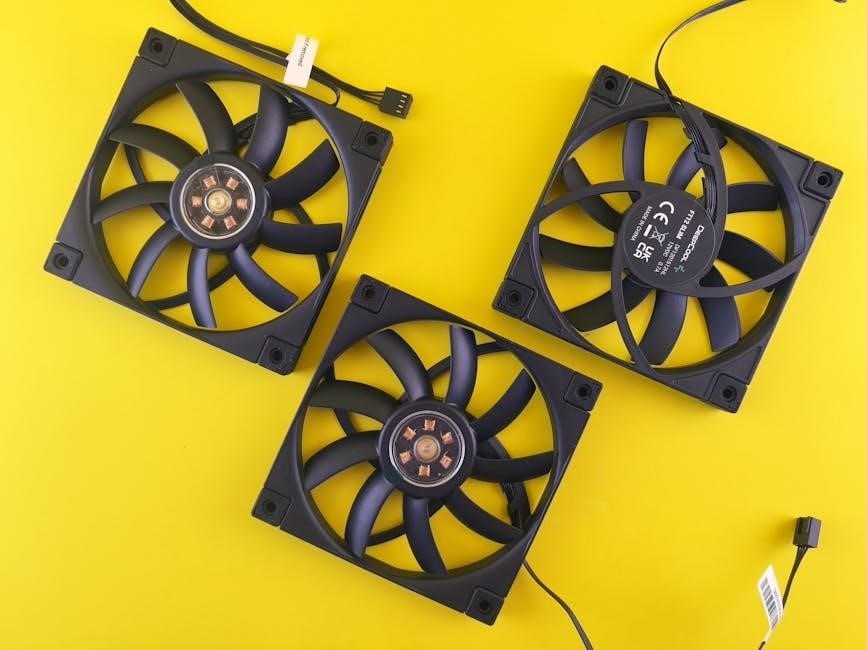
Tips for a Smooth Assembly
Start with a solid, level base to ensure stability. Use a second pair of hands for challenging steps and organize parts beforehand. Align components carefully to avoid misfits and refer to instructions frequently for clarity. Properly secure snap-together fasteners and double-check hardware placement for a sturdy finish. Working methodically and staying organized will save time and reduce frustration during assembly.
5.1 Working with Snap-Together and Sliding Fasteners
When assembling the Rubbermaid 7×7 shed, snap-together and sliding fasteners simplify the process. Ensure parts align properly before securing to avoid misfits. Tap gently with a mallet if needed. Lubricate sliding parts lightly if stuck. These fasteners are designed for ease but may require patience. Work methodically, checking alignment as you go. If a piece feels forced, double-check its positioning. Proper use of these fasteners ensures a sturdy structure and prevents future issues. Extra hands can be helpful for tricky sections, but overall, they make assembly efficient and straightforward.
5.2 Ensuring Proper Alignment of Parts
Proper alignment of parts is crucial for a sturdy and functional Rubbermaid 7×7 shed. Start by verifying each component fits snugly without forcing. Use a level to ensure the base and walls are even. Check panels for straight edges and match them carefully. Misaligned parts can lead to structural weaknesses and affect door functionality. If a piece doesn’t fit, re-examine the instructions or adjust slightly. Patience here ensures a stable and weather-tight shed. Extra hands can help maintain alignment during assembly, especially for larger panels and roof sections.
5.3 Using a Second Pair of Hands for Challenging Steps
Some steps in the Rubbermaid 7×7 shed assembly, like attaching heavy panels or aligning roof sections, can be difficult alone. Having a second pair of hands ensures stability and accuracy. An assistant can hold panels in place while fastening or help lift heavier components. This collaboration prevents parts from shifting out of alignment and reduces the risk of damage. Teamwork also speeds up the process, especially when dealing with awkwardly shaped or oversized pieces. Don’t hesitate to enlist help for challenging steps to ensure a smooth and successful assembly experience.
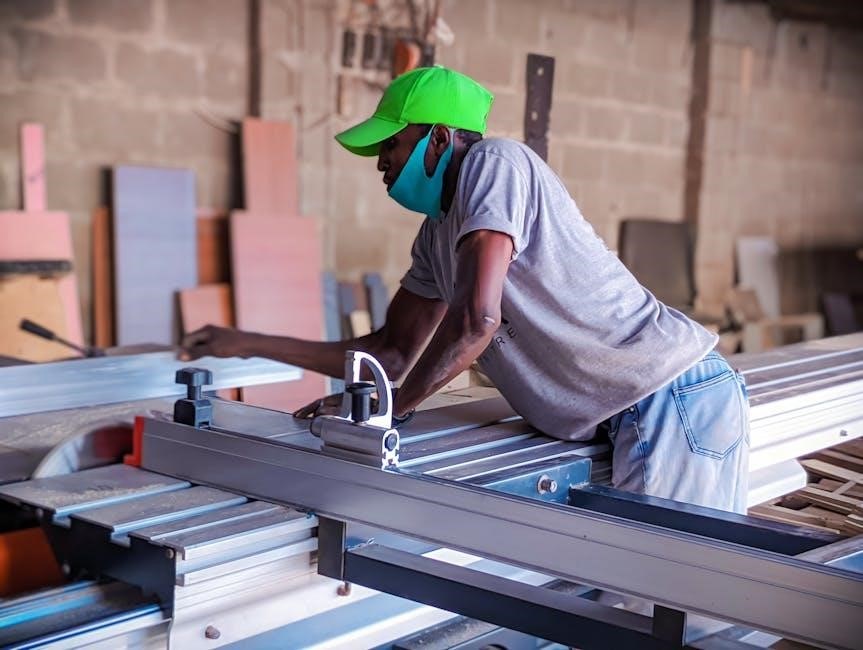
Additional Features and Accessories
The Rubbermaid 7×7 shed offers optional features like windows for natural light and shelving for organization. Accessories such as locks enhance security, while other additions improve functionality.
6.1 Installing Windows and Ventilation
Installing windows and ventilation in the Rubbermaid 7×7 shed enhances lighting and airflow. Windows are pre-framed and attach securely to the walls using provided hardware. For ventilation, small gaps at the roof’s base or optional vents can be added to prevent moisture buildup. Ensure all openings are sealed properly to maintain the shed’s weather resistance. Follow the instruction manual for precise installation steps to integrate these features seamlessly into your shed’s structure for optimal functionality and comfort.
6.2 Adding Shelving and Storage Accessories
Enhance your Rubbermaid 7×7 shed’s functionality by adding shelving and storage accessories. Optional shelves and hooks can be installed using pre-drilled holes or brackets for secure placement. These accessories help maximize storage space and keep items organized. Consider the weight capacity of shelves to ensure safety and stability. While the shed includes basic storage features, adding extra shelving allows for better customization and efficiency. This step is ideal for organizing tools, seasonal decorations, or other items, making your shed a more practical and clutter-free space.
6.3 Securing the Shed with Locks
Securing your Rubbermaid 7×7 shed with locks is essential to protect your valuables. The shed is designed with durability in mind, but adding a reliable locking mechanism enhances safety. Use a sturdy padlock or integrated locking system compatible with the shed’s door design. Some models may come with pre-drilled holes for locks, simplifying installation. For added security, consider reinforcing the door and frame with anti-theft brackets. Regularly inspect the locking mechanism to ensure it remains functional and secure. A well-locked shed provides peace of mind, safeguarding your belongings from unauthorized access or theft.
Common Challenges and Solutions
Common challenges include misaligned parts and unclear instructions. Solutions involve double-checking alignment, seeking clarification, and using additional tools or assistance when needed for smoother assembly.
7.1 Dealing with Misaligned Parts
Misaligned parts are a common issue during assembly. To address this, ensure the base is level and all components are securely fastened. If parts still don’t align, gently adjust them without forcing, as excessive pressure may damage the material. Double-check the instructions to confirm correct part placement. In some cases, removing and reattaching sections may resolve the issue. If problems persist, consider seeking assistance or consulting additional resources for clarification.
7.2 Clarifying Unclear Instructions
Unclear instructions can hinder the assembly process. To resolve this, carefully review the manual and cross-reference with online resources or video guides. Many users find it helpful to consult the manufacturer’s website for detailed assembly instructions and diagrams. If specific steps remain ambiguous, consider reaching out to customer support or seeking advice from DIY forums. Taking the time to understand each step ensures a smoother assembly experience and minimizes the risk of errors. Patience and thorough preparation are key to overcoming unclear instructions effectively.
7.3 Managing Tight or Difficult-to-Assemble Sections
When encountering tight or challenging sections during assembly, start by ensuring all parts are correctly aligned and the base is level. Using a rubber mallet can gently tap pieces into place without causing damage. Applying a small amount of silicone spray may also help parts fit more smoothly. If sections remain difficult, consider enlisting a second person to assist, especially for larger components like the roof or walls. Avoid forcing parts together, as this could lead to damage. If issues persist, check for proper alignment and consult online resources or customer support for additional guidance. Patience and careful preparation are key to managing these sections effectively.

Post-Assembly Checks
After assembly, inspect the shed for stability, ensuring all parts are securely fastened. Test door and lock mechanisms for proper function. Check for water tightness and weather resistance to ensure durability and reliability over time.
8.1 Inspecting the Structure for Stability
After completing the assembly, inspect the shed’s structure for stability. Ensure the base is level and securely anchored to prevent shifting. Check all walls and panels for proper alignment and tight connections. Verify that the roof is evenly supported and free from sagging. Look for any gaps or misaligned parts that could compromise structural integrity. Test the doors to ensure they open and close smoothly without binding. Address any issues promptly, as instability can lead to damage over time. A sturdy structure ensures long-term durability and safety.
8.2 Testing Door and Lock Mechanisms
Once the shed is assembled, test the door and lock mechanisms to ensure proper functionality. Open and close the doors multiple times to check for smooth operation and alignment. Verify that the doors latch securely and remain closed without sagging or binding. Test the lock to confirm it engages and disengages correctly, providing secure closure. If the doors are misaligned, adjust the hinges or frame as needed. Address any issues promptly to prevent future problems. Properly functioning doors and locks are essential for security and weather tightness, ensuring your shed remains safe and protected from the elements.
8.3 Ensuring Water Tightness and Weather Resistance
After assembling the shed, ensure all seams and joints are tightly sealed to prevent water ingress. Inspect the roof, walls, and door seals for any gaps or damage. Apply weatherproofing materials like silicone sealant to any areas where leaks might occur. Check drainage around the shed to ensure water flows away from the base. Verify that all components, such as roof panels and doors, are securely fastened to withstand wind and rain. Regularly inspect and maintain weatherproofing features to protect your shed from the elements and extend its lifespan.
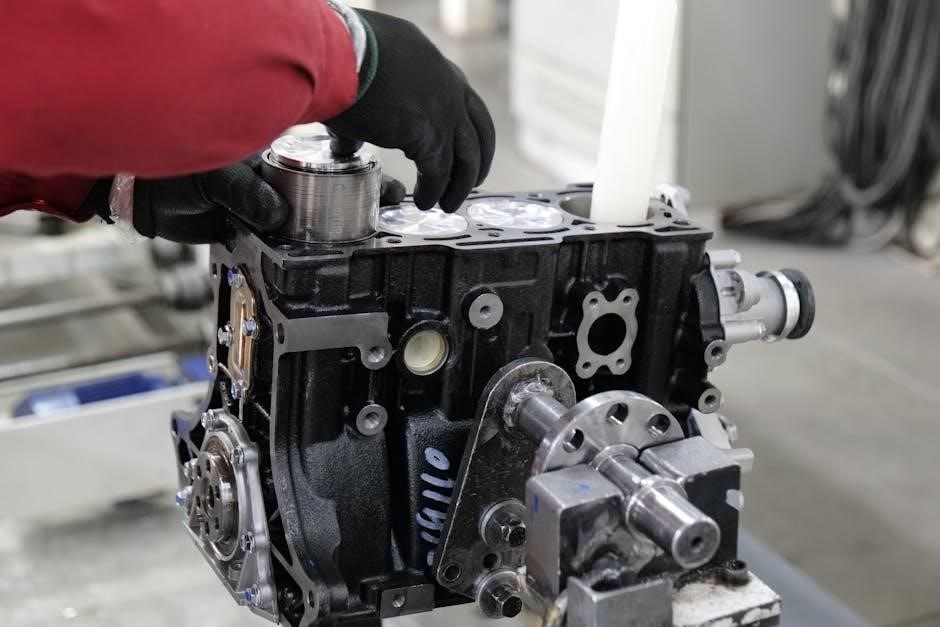
Maintenance and Care
Regularly clean the shed to prevent dirt buildup and inspect for damage or wear. Perform seasonal checks to ensure the structure remains secure and weather-tight, addressing any issues promptly to maintain its durability and functionality over time.
9.1 Cleaning the Shed Regularly
Regular cleaning is essential to maintain the appearance and durability of your Rubbermaid 7×7 shed. Use a mild detergent and water to wipe down the exterior and interior surfaces, removing dirt, debris, and mildew. Avoid using harsh chemicals or abrasive materials that could damage the resin. Sweep or hose down the floor to keep it free from clutter and moisture. Additionally, inspect and clean the roof gutters and downspouts to ensure proper water flow. Regular cleaning not only enhances the shed’s longevity but also prevents pests and mold growth, keeping your storage space clean and functional.
9.2 Inspecting for Damage or Wear
Regularly inspect your Rubbermaid 7×7 shed for signs of damage or wear to ensure its longevity. Check the roof for cracks or broken panels, and the walls for dents or fading. Inspect the doors for proper alignment and functionality, as misalignment can lead to gaps or difficulty in closing. Look for any signs of moisture damage, mold, or pest infestation inside the shed. Address any issues promptly by replacing damaged panels or tightening loose hardware. Regular inspections help maintain the shed’s structural integrity and prevent minor problems from becoming major repairs.
9.3 Seasonal Checks and Adjustments
Perform seasonal checks to ensure your Rubbermaid 7×7 shed remains in optimal condition. Before winter, inspect the roof for tightness and ensure all panels are securely fastened to prevent water seepage. Check for any gaps or cracks that may allow cold air or moisture to enter. In spring, look for damage caused by winter weather, such as warped panels or loose fasteners. Summer checks should focus on ventilation to prevent overheating, while fall checks involve preparing the shed for winter by clearing debris and ensuring doors are properly aligned. Regular seasonal adjustments help maintain the shed’s durability and functionality year-round.
Disassembly and Relocation
To disassemble the Rubbermaid 7×7 shed, reverse the assembly steps, starting with the roof and working down to the base. Carefully remove screws and fasteners, labeling each part for easy reassembly. Transport components to the new location, ensuring they are securely packed to prevent damage. At the new site, reassemble the shed following the original instructions, ensuring the base is level and stable. This process allows for efficient relocation while maintaining the shed’s structural integrity.

10;1 Reversing the Assembly Process
Disassembling the Rubbermaid 7×7 shed involves reversing the assembly steps. Start by removing the roof supports and carefully lifting the roof panels off. Next, unscrew the wall panels and floor sections, ensuring all hardware is safely stored. Detach the doors and any additional accessories, labeling each component for easy identification. While the process is systematic, it can be challenging, especially with tightly fitted parts. Patience and organization are key to ensuring all pieces remain intact and ready for reassembly at the new location.
10.2 Packing and Transporting Components
Packing and transporting the Rubbermaid 7×7 shed components requires careful organization to ensure safety and avoid damage. Begin by categorizing and labeling each part, such as panels, hardware, and accessories, into sturdy boxes or containers. Use bubble wrap or padding to protect fragile or protruding elements. Secure larger sections like roof panels and walls with straps or ropes to prevent shifting during transport. Ensure all small hardware is stored in sealed bags and attached to corresponding components for easy identification. Double-check that all items are accounted for before moving to avoid losing essential parts.
10.3 Reassembling at the New Location
Reassembling the Rubbermaid 7×7 shed at the new location requires careful planning and adherence to the original assembly instructions. Start by choosing a level, stable site and unpacking all components, ensuring nothing is damaged or missing. Use the labels from the disassembly process to identify and organize parts efficiently. Follow the step-by-step guide, beginning with the base and working upward, to ensure structural integrity. Double-check alignment and secure all connections firmly. If components were labeled during disassembly, refer to these labels to simplify the process and maintain accuracy.
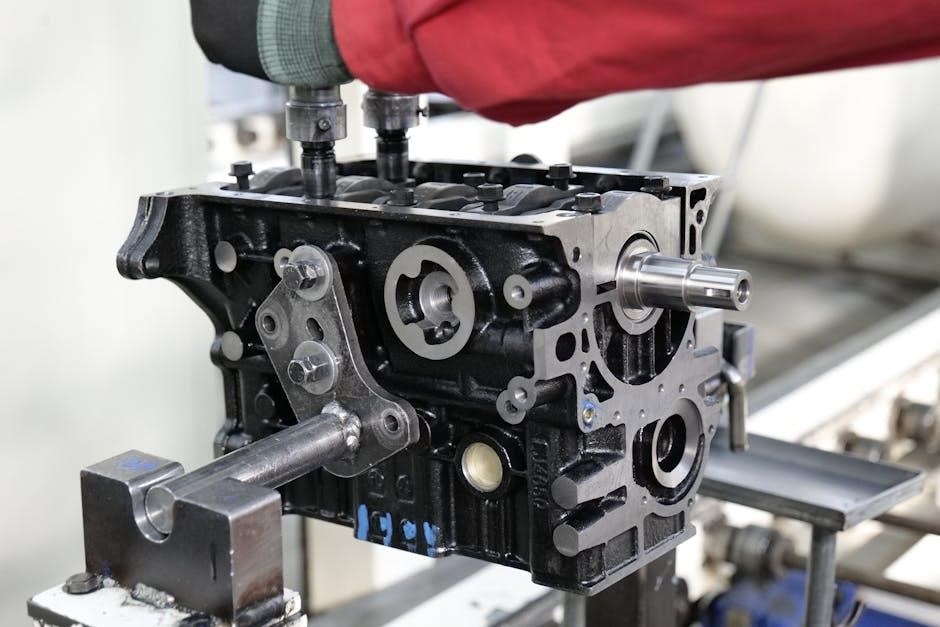
Safety Considerations
Always use proper lifting techniques to avoid injury. Ensure a safe working environment, free from children and pets. Avoid overloading the shed to maintain structural stability.
11.1 Using Proper Lifting Techniques
When assembling the Rubbermaid 7×7 shed, it’s crucial to lift components safely. Bend at the knees, keep items close to your body, and avoid twisting. Use a second person for heavy parts to prevent strain. Ensure all panels and sections are securely held before lifting to maintain balance and control. Improper lifting can lead to injuries or damage to the shed components. Always prioritize your safety and the integrity of the structure during assembly.
11.2 Avoiding Overloading the Shed
Avoiding overloading the Rubbermaid 7×7 shed is essential to maintain its structural integrity and ensure safety. Only store items within the recommended weight capacity to prevent damage. Distribute weight evenly across the floor and shelves to avoid warping or collapse. Avoid storing heavy machinery or excessive quantities of bulky items, as this can compromise the shed’s stability. Regularly inspect stored items to ensure they are secure and properly arranged. Overloading can lead to long-term damage, so always prioritize balanced storage for optimal performance and longevity of your shed.
11.3 Ensuring a Safe Working Environment
Ensuring a safe working environment is crucial when assembling the Rubbermaid 7×7 shed. Always work in a well-lit, clear area free from obstacles. Wear protective gear like gloves and safety glasses to prevent injuries. Use proper lifting techniques to avoid straining your back. Keep children and pets away from the assembly site. Avoid using power tools near flammable materials. Ensure all tools and components are securely positioned to prevent accidents. Regularly inspect the area for potential hazards, such as loose parts or uneven surfaces. Follow all safety guidelines in the instruction manual to ensure a secure and incident-free assembly process.
Assembling the Rubbermaid 7×7 shed is a manageable DIY project, offering durability and style for storage needs. While challenges may arise, proper preparation and patience ensure success.
12.1 Final Thoughts on Assembly
Assembling the Rubbermaid 7×7 shed is a manageable DIY project that offers a sense of accomplishment once completed. While some users find it straightforward, others face challenges with misaligned parts and unclear instructions. Patience and teamwork are key, especially for complex steps like roof installation or door alignment. Following the manual carefully and preparing a level surface ensure a smoother process. Despite potential frustrations, the shed’s durability and functionality make the effort worthwhile, providing reliable storage for years to come.
12.2 Benefits of Proper Assembly
Properly assembling the Rubbermaid 7×7 shed ensures structural integrity, stability, and optimal performance. A well-assembled shed withstands harsh weather conditions, preventing leaks and damage. It also maximizes storage capacity and maintains the product’s warranty. Correct alignment of panels and secure fastening of hardware prevent future repairs. Additionally, a properly built shed enhances safety, reduces maintenance needs, and extends its lifespan. Following the instructions diligently pays off in long-term durability and functionality, making the effort a wise investment for homeowners seeking reliable outdoor storage solutions.
12.3 Encouragement for DIY Enthusiasts
Assembling a Rubbermaid 7×7 shed is a rewarding DIY project that boosts confidence and skill. The process, while challenging at times, offers a sense of accomplishment. With clear instructions and manageable steps, DIY enthusiasts can achieve professional-like results. Collaboration with a partner enhances the experience, fostering teamwork and shared pride. Embrace the opportunity to create functional storage space tailored to your needs. Patience and persistence will yield a durable, long-lasting shed, proving that DIY projects are both feasible and fulfilling for those willing to take on the task.


